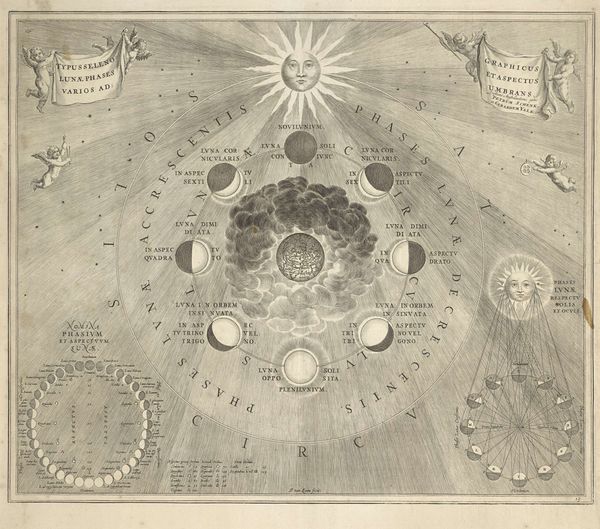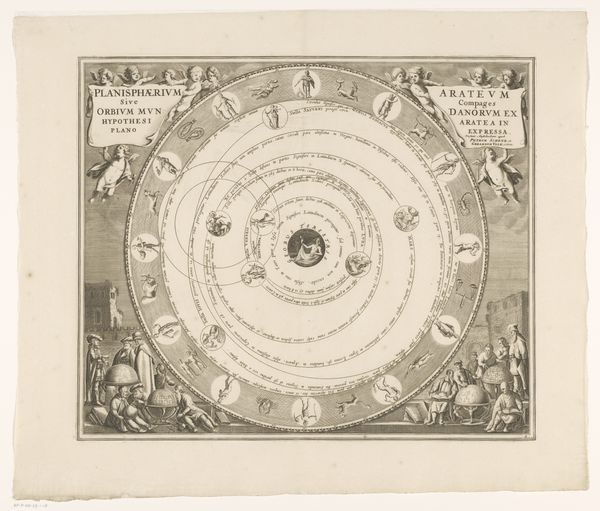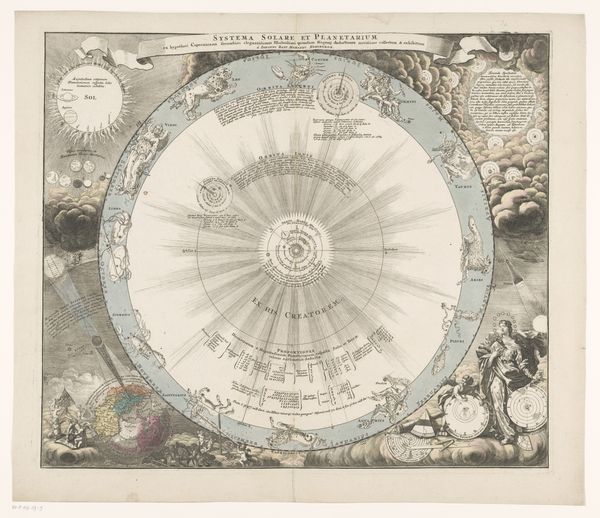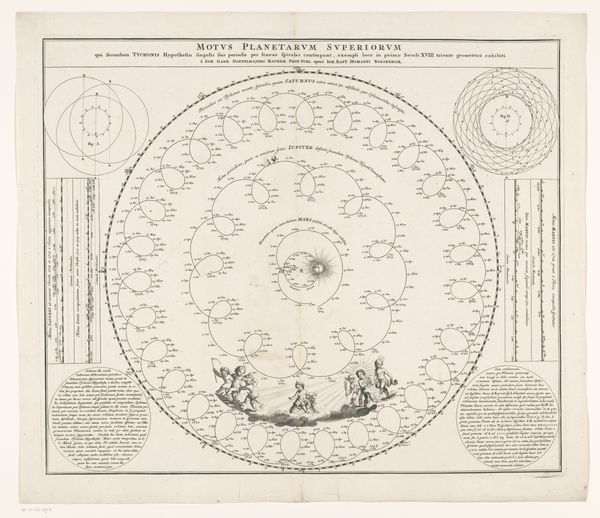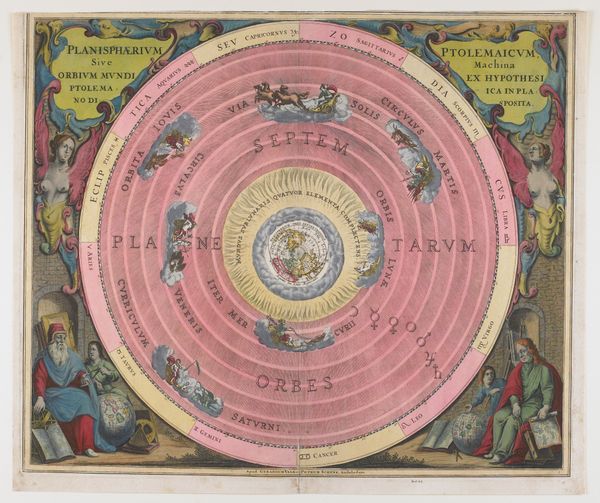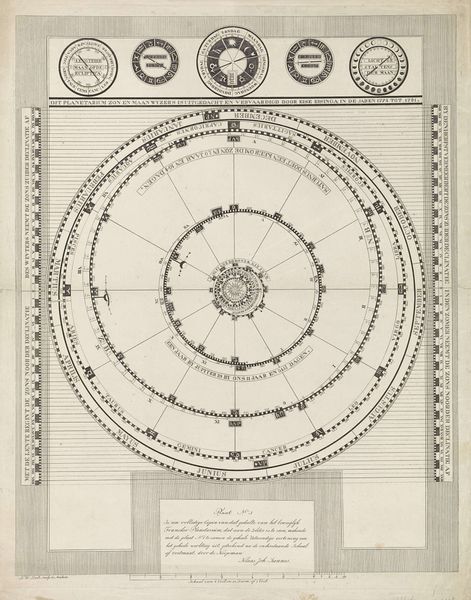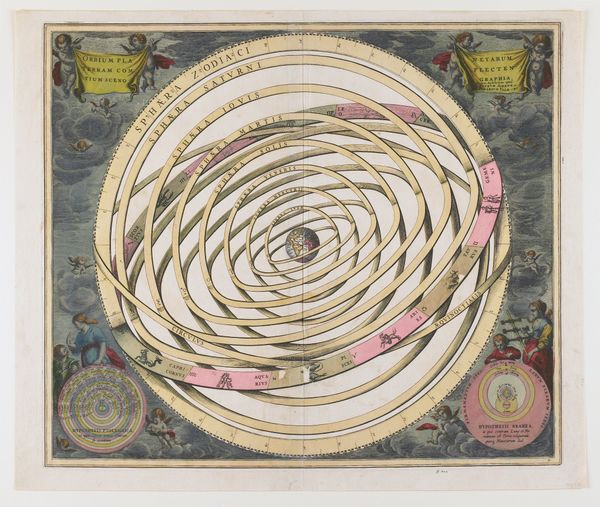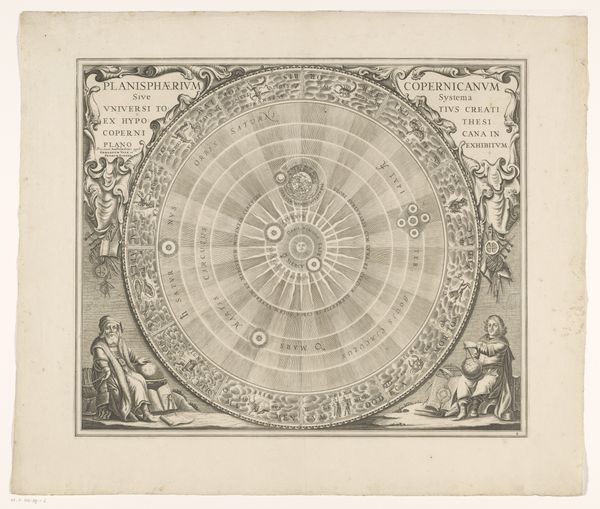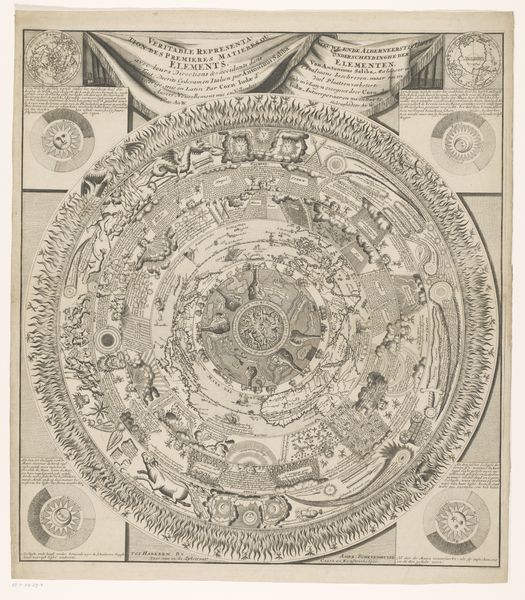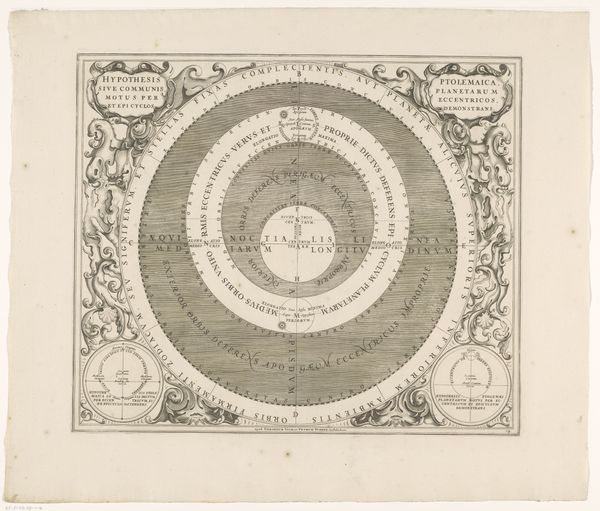
The Varying Phases and Appearances of the Moon 1660
0:00
0:00
print, paper, ink, engraving
#
water colours
#
allegory
#
baroque
# print
#
figuration
#
paper
#
ink
#
geometric
#
engraving
Dimensions: 16 7/8 x 20 in. (42.86 x 50.8 cm) (plate)
Copyright: Public Domain
Curator: What strikes me first is how the whole thing breathes, a kind of cosmic respiration. This celestial map is rendered in such a delicate, almost whimsical way. Editor: Well, "whimsical" is one word for it. The piece, entitled "The Varying Phases and Appearances of the Moon," created around 1660 by Andreas Cellarius, is currently housed at the Minneapolis Institute of Art. It's an engraving with ink and watercolor on paper. From an activist perspective, the geometric layout combined with religious cherubs points toward an active ideological program to assert an ordered Christian universe. Curator: Right, you see the assertion, and I see the dream. Look at the sun's face! And those cherubs are so round and rosy, they’re practically floating. It reminds me of Renaissance frescoes but through a Northern European, slightly melancholic filter. The artist, Cellarius, I imagine him poring over star charts, then stepping back to add these personal, almost sentimental touches. Editor: But this isn’t just about artistic expression, right? It is baroque allegory – a visual argument. Consider the context: it's the mid-17th century, a time of profound social and political upheaval. Mapping the heavens becomes a way of understanding terrestrial existence; the phases of the moon mirror changes happening on Earth, framing them as divine plan, or divine mandate, so the personal isn’t merely personal. Curator: Yes, the geometry orders it all, absolutely – concentric circles holding each lunar phase like pearls on a string. Yet each face of the moon has its unique shadowing, its own quiet personality. There’s a tension between scientific observation and imaginative storytelling. The overall warm color and pink shades soften what otherwise might seem rigid or clinical. Editor: Absolutely. The geometric rendering presents as something eternal and universal, obscuring any real understanding of variable lunar movement. We are left only with a flattened symbolic diagram that actively denies contemporary social realities. These artistic flourishes romanticize, or really normalize, the unjust dynamics of the day. Curator: Maybe it’s the pink – that rosy blush across the whole engraving. It humanizes what could have been cold and didactic, adding tenderness to what might have become rigid. I wonder, were they really trying to normalize injustice, or just lost in wonder? Perhaps a bit of both. Editor: And perhaps that inherent contradiction is exactly what makes the work so fascinating. An ordered and harmonic yet subtly troubled and uncertain representation of our world, with both still resonating loudly today.
Comments
No comments
Be the first to comment and join the conversation on the ultimate creative platform.
